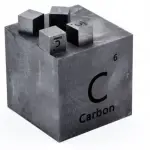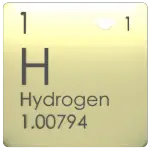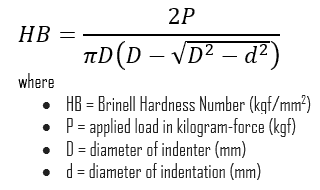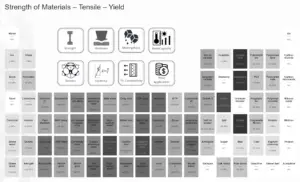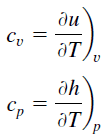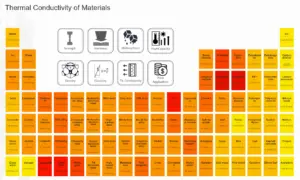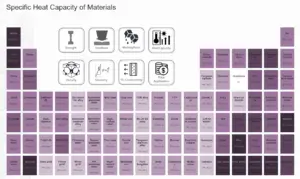About Polyethylene
Polyethylene is a whitish, semi-crystalline, and effectively opaque engineering thermoplastic. Polyethylene is classified by its density and branching. From low-density polyethylene (LDPE) to ultra-high-molecular-weight polyethylene (UHMWPE). Its mechanical properties depend significantly on variables such as the extent and type of branching, the crystal structure, and the molecular weight.
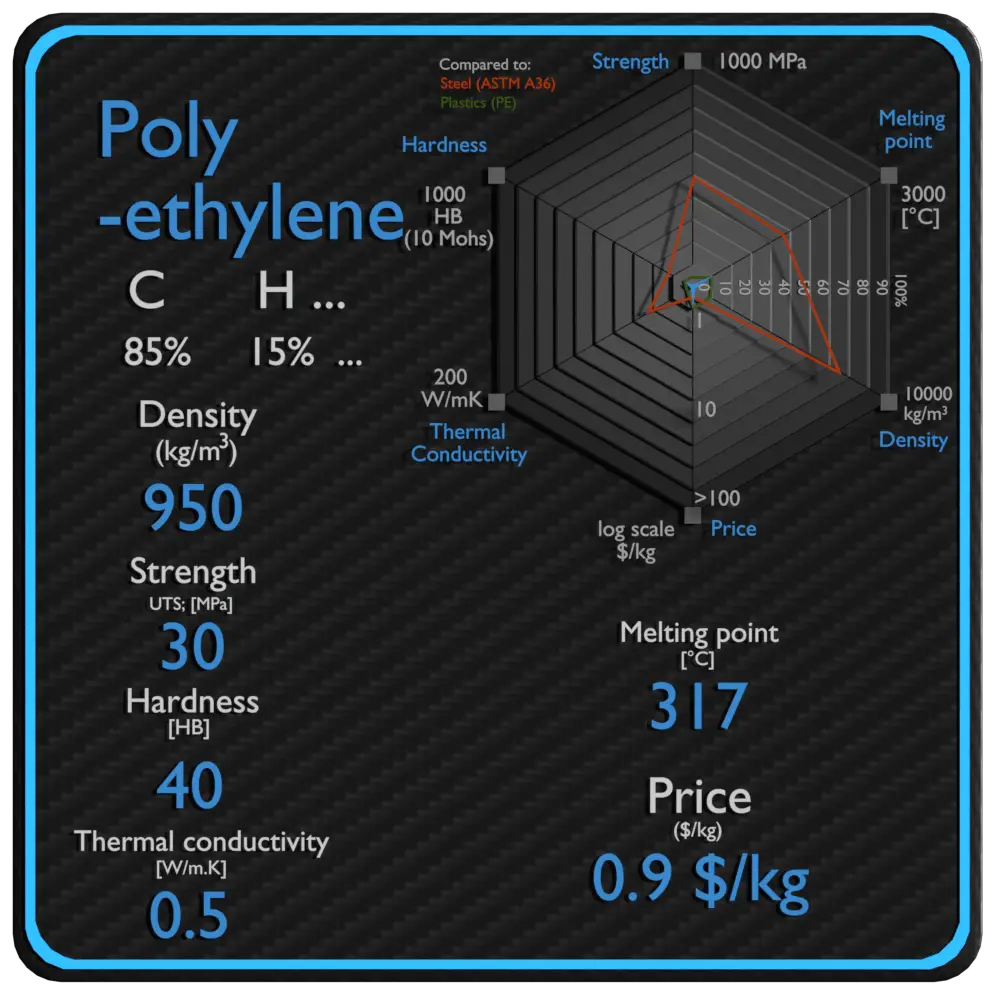
Summary
| Name | Polyethylene |
| Phase at STP | solid |
| Density | 950 kg/m3 |
| Ultimate Tensile Strength | 30 MPa |
| Yield Strength | 20 MPa |
| Young’s Modulus of Elasticity | 1 GPa |
| Brinell Hardness | 40 BHN |
| Melting Point | 317 °C |
| Thermal Conductivity | 0.5 W/mK |
| Heat Capacity | 1550 J/g K |
| Price | 0.9 $/kg |
Composition of Polyethylene
Its repeat structure is (-CH2CH2-)x, which is written as polyethylene rather than polymethylene (-CH2)x, in deference to the various ethylene polymerization mechanisms. PE has a deceptive simplicity.
Applications of Polyethylene
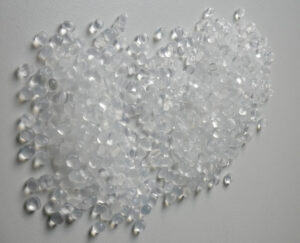
Polyethylene (PE) is the highest-volume polymer in the world. Its high toughness, ductility, excellent chemical resistance, low water vapor permeability, and very low water absorption, combined the ease with which it can be processed, make PE of all different density grades an attractive choice for a variety of goods. As of 2017, over 100 million tonnes of polyethylene resins are being produced annually, accounting for 34% of the total plastics market. PE is limited by its relatively low modulus, yield stress, and melting point. PE is used to make containers, bottles, film, and pipes, among other things. LDPE combines high impact strength, toughness, and ductility to make it the material of choice for packaging films, which is one mof its largest applications.
Mechanical Properties of Polyethylene
Strength of Polyethylene
In mechanics of materials, the strength of a material is its ability to withstand an applied load without failure or plastic deformation. Strength of materials basically considers the relationship between the external loads applied to a material and the resulting deformation or change in material dimensions. In designing structures and machines, it is important to consider these factors, in order that the material selected will have adequate strength to resist applied loads or forces and retain its original shape.
Strength of a material is its ability to withstand this applied load without failure or plastic deformation. For tensile stress, the capacity of a material or structure to withstand loads tending to elongate is known as ultimate tensile strength (UTS). Yield strength or yield stress is the material property defined as the stress at which a material begins to deform plastically whereas yield point is the point where nonlinear (elastic + plastic) deformation begins. In case of tensional stress of a uniform bar (stress-strain curve), the Hooke’s law describes behaviour of a bar in the elastic region. The Young’s modulus of elasticity is the elastic modulus for tensile and compressive stress in the linear elasticity regime of a uniaxial deformation and is usually assessed by tensile tests.
See also: Strength of Materials
Ultimate Tensile Strength of Polyethylene
Ultimate tensile strength of Polyethylene is 30 MPa.
Yield Strength of Polyethylene
Yield strength of Polyethylene is 20 MPa.
Modulus of Elasticity of Polyethylene
The Young’s modulus of elasticity of Polyethylene is 1 MPa.
Hardness of Polyethylene
In materials science, hardness is the ability to withstand surface indentation (localized plastic deformation) and scratching. Brinell hardness test is one of indentation hardness tests, that has been developed for hardness testing. In Brinell tests, a hard, spherical indenter is forced under a specific load into the surface of the metal to be tested.
The Brinell hardness number (HB) is the load divided by the surface area of the indentation. The diameter of the impression is measured with a microscope with a superimposed scale. The Brinell hardness number is computed from the equation:
Brinell hardness of Polyethylene is approximately 40 BHN (converted).
See also: Hardness of Materials
Thermal Properties of Polyethylene
Polyethylene – Melting Point
Melting point of Polyethylene is 317 °C.
Note that, these points are associated with the standard atmospheric pressure. In general, melting is a phase change of a substance from the solid to the liquid phase. The melting point of a substance is the temperature at which this phase change occurs. The melting point also defines a condition in which the solid and liquid can exist in equilibrium. For various chemical compounds and alloys, it is difficult to define the melting point, since they are usually a mixture of various chemical elements.
Polyethylene – Thermal Conductivity
Thermal conductivity of Polyethylene is 0.5 W/(m·K).
The heat transfer characteristics of a solid material are measured by a property called the thermal conductivity, k (or λ), measured in W/m.K. It is a measure of a substance’s ability to transfer heat through a material by conduction. Note that Fourier’s law applies for all matter, regardless of its state (solid, liquid, or gas), therefore, it is also defined for liquids and gases.
The thermal conductivity of most liquids and solids varies with temperature. For vapors, it also depends upon pressure. In general:
Most materials are very nearly homogeneous, therefore we can usually write k = k (T). Similar definitions are associated with thermal conductivities in the y- and z-directions (ky, kz), but for an isotropic material the thermal conductivity is independent of the direction of transfer, kx = ky = kz = k.
Polyethylene – Specific Heat
Specific heat of Polyethylene is 1550 J/g K.
Specific heat, or specific heat capacity, is a property related to internal energy that is very important in thermodynamics. The intensive properties cv and cp are defined for pure, simple compressible substances as partial derivatives of the internal energy u(T, v) and enthalpy h(T, p), respectively:
where the subscripts v and p denote the variables held fixed during differentiation. The properties cv and cp are referred to as specific heats (or heat capacities) because under certain special conditions they relate the temperature change of a system to the amount of energy added by heat transfer. Their SI units are J/kg K or J/mol K.
Properties and prices of other materials
material-table-in-8k-resolution
